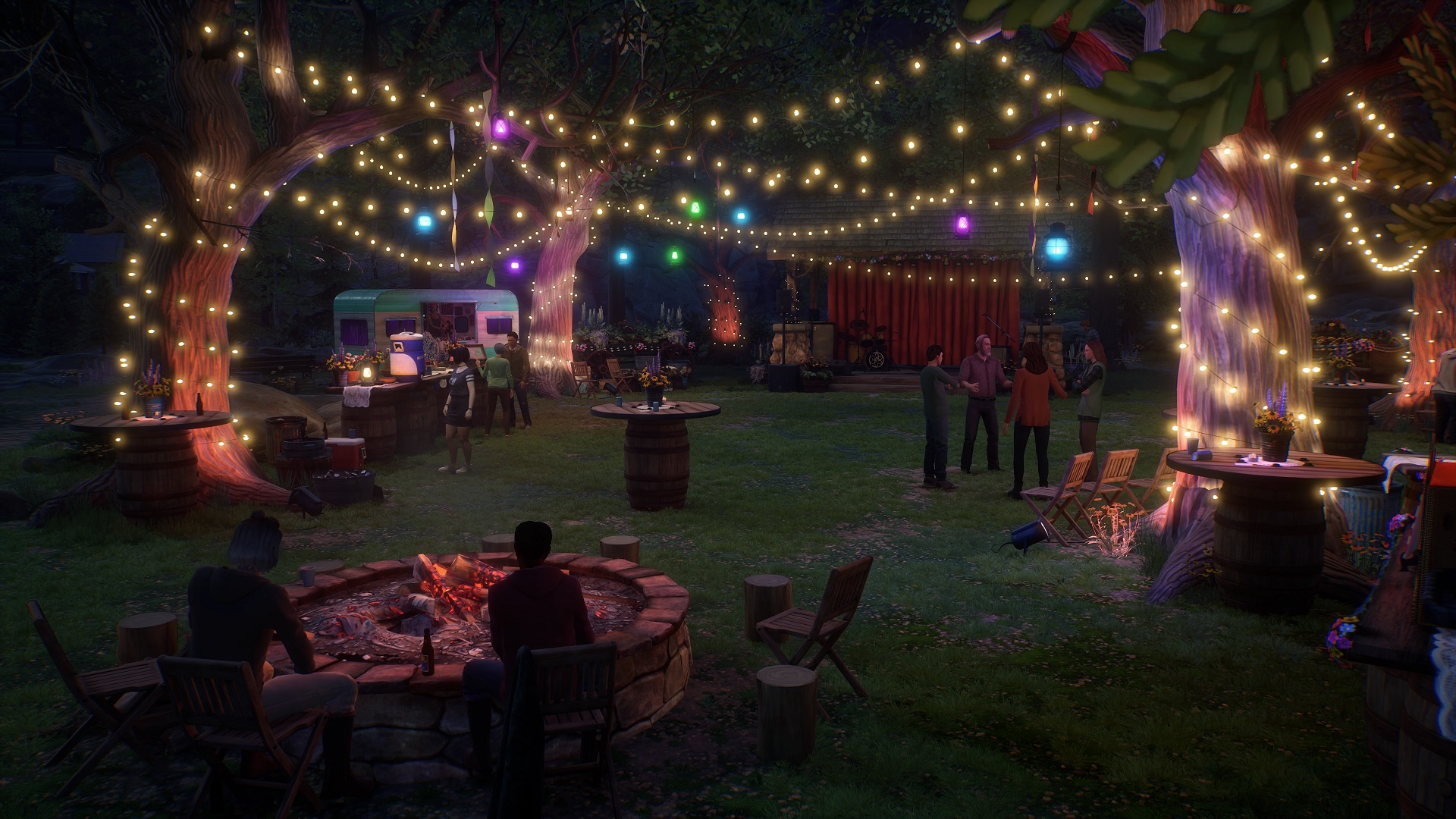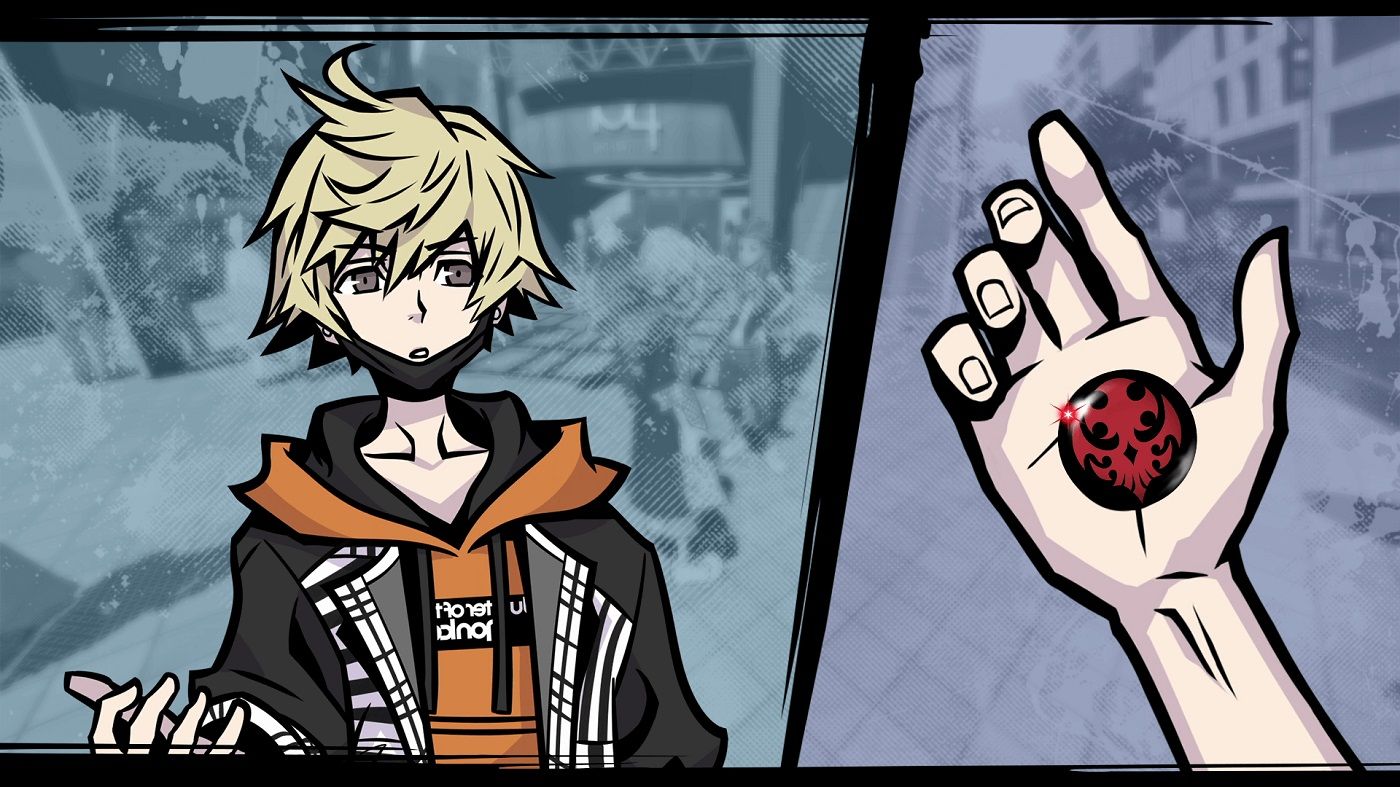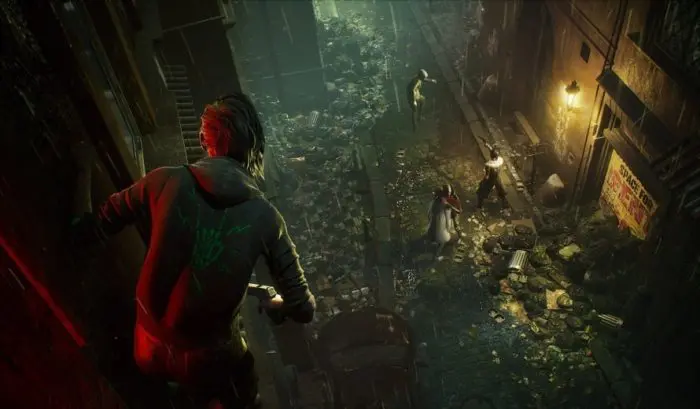

As a big fan of the series, I have been looking forward to Life Is Strange: True Colors for quite some time. Even before it was officially announced, to be honest. Developer Deck Nine had been rumored to be working on another entry in the series shortly after they wrapped up work on Before the Storm, but the studio had kept mum on what their next project was. And while I did enjoy Dontnod’s Life is Strange 2, it felt like the studio had perhaps bitten off more than they could chew for that sequel. I wanted the small-town vibes of the beloved first entry, which is exactly what True Colors seemed to promise.
Unlike prior protagonists Max Caulfield and Daniel Diaz, Alex Chen has known about her powers for quite some time. She possesses the unique ability to not only see strong emotions radiating off others, but can also feel and manipulate them. However, this power has proven to be nothing but a curse, with Alex never fully being able to reign it in. It has caused her to be shuffled off from multiple orphanages and foster homes over the years. However, after her brother Gabe finally tracks her down and reaches out to her, things appear to be changing for the young woman. She has a new home in the charming town of Haven Springs, Colorado, and a chance to truly start over. The good times don’t last long, though, as Alex’s brother is killed in what appears to be an unfortunate accident. Despite the small-town veneer of Haven Springs, there are secrets to be uncovered, and it seems like Gabe’s death may have not been a total accident.
Small town rot has been a consistent theme throughout the series, and True Colors doesn’t shy away from it. There’s plenty to love about Haven Springs from the outside. Its denizens are friendly and care for one another, and there’s a quirky charm that makes it an ideal place to live. However, long-buried secrets are going to come to light after Gabe’s death, with Alex being the catalyst for bringing them to the surface. While the accident investigation is the driving force of the narrative, there is also a strong focus on Alex coming to terms with her power and past. She has always viewed her power as a burden, but she will come to realize that good can come of it as well — namely, the ability to help others rein in their grief and anger over the incident, helping her finally find friends and family she’s longed for.

Despite my love for the first game in the franchise, I have to conceive that this new tale might be the most complete story in the series. Prior entries have struggled in numerous ways, most noticeably in their conclusions. True Colors skirts this, though, by delivering a story that is strong from start to finish. From the opening moments arriving in Haven Springs to an excellent finale that outlines where Alex can take her life, I was consistently captivated. Besides the intriguing overarching mystery, credit must be given to the excellent cast Deck Nine has assembled. Alex is a fully fleshed-out protagonist whose struggles feel very real and relatable, despite the superpowers she possesses. Aside from that, the citizens of Haven Springs are a delight to spend time with. The return of Steph Gingrich is a highlight, as is the other character competing for our hero’s heart, Ryan Lucan. He’s a major step up from the Warren Grahams of the world. I enjoyed my time enough with the town that I made sure to seek out every interaction I could, which is a rarity for me these days.
If you are familiar with the franchise, you should have a good idea as to how Life is Strange: True Colors plays. You spend most of your time walking around the town, interacting with various objects and people you come across. Sometimes this will just lead to a quip from Alex, and sometimes it may lead to something more meaningful. You may unlock a new dialogue option for someone, or even an optional side-quest. Be sure to always keep an eye on your phone for new text messages, or postings to the town community page. These will help further flesh out the townsfolk and their various goings-on. As always, your actions always carry a consequence. With a more grounded story this time around, this won’t result in a supernatural tornado or anything, but it’s always important to keep that in mind.
When it was first unveiled, I wasn’t entirely sure how Alex’s power of extreme empathy was going to play in-game — it seemed like a tough ability to build a whole game around. However, Deck Nine incorporates it in ways that feel logical to the franchise. When tapping into her power, Alex will be able to sense colored auras around a subject, with each color corresponding to a different emotion. Red for anger, blue for sadness, and so on. The surface-level use of it is to just hear someone’s inner thoughts, which typically hint as to why they feel that way. For the more minor characters, this will be enough to fix whatever problem they are facing. However, for the town’s key players, you will need to tap even further into her powers.

Besides just being able to see the emotions someone is experiencing, Alex can both that emotion as her own and manipulate their thoughts as well. Once she has further tapped into her subject’s emotions, the world around the two will change to reflect their mood. From there, Alex can focus on specific objects that are critical to the volatile emotions she is working with. It could be something as innocuous as a photo or foosball table, but these items are critical to figuring out what’s really going on. Once these investigatory moments run their course, you’ll hopefully be able to provide them some form of comfort. As you progress through the story, this process will become more and more strenuous on Alex, and certain scenarios may require more drastic actions to be taken.
It’s far from the deepest gameplay mechanic, but Alex’s empathy power is handled well. Coaxing out someone’s buried feelings in order to help them feels less sticky than Max’s use of time manipulation in the first Life Is Strange. Since most of these emotions stem from Gabe’s death, it’s great that these moments help Alex come to terms with what happened as well. Grief comes in many forms and feelings, and True Colors is cognizant of this. Maybe it was due to the choices I made, but I do wish the game explored more of the downside of Alex manipulating someone’s emotions. Coming off of Psychonauts 2 — which made it abundantly clear that it wasn’t wise to mess with someone else’s mind — what tends to happen here can feel slight. Again, though, I might have missed addressing these potential issues during my playthrough. Something to keep an eye out for in subsequent runs, I suppose.
Life Is Strange: True Colors is easily the best-looking entry in the series to date. The facial movements on all of the main players look fantastic, even on a last-gen console. They accurately sync up to their dialogue, and each of them have defining features that give them some nice flavor. Haven Springs may not be the biggest area to explore, but it carries more detail than either Arcadia Bay or any of the locations Life is Strange 2 took players. The vibrant colors of the local foliage and variety of stores give the locale the small-town feel that’s needed to sell the story. Deck Nine could have done a little better when it comes to blocking off where you can’t go, but that’s only a minor quibble.

Another thing that helps sell the characters is the excellent voice acting across the board. As Alex, Erika Mori had the biggest test on her hands, but she easily passes it. Mori does an incredible job of selling the gauntlet of emotions Alex runs through during the course of the story. The supporting cast is just as wonderful, as well. Katy Bentz continues to give Steph an infectious energy, while Stephen F. Austin as Jed sells the father figure presence the role calls for. And not unlike Deck Nine’s past entry in the series, the mix of licensed tunes and original soundtrack help set the tone. This time around, the studio enlisted talented duo Angus and Julia Stone to deliver the soundtrack, and they did a great job with it. Licensed songs from the likes of Kings of Leon and Dido might not be as rock-solid as some of the artists used in the past, but they serve their purpose in-game.
The original Life is Strange will always hold the top spot in my heart, but Life is Strange: True Colors might just be the best entry in the series to date. Deck Nine has delivered an emotionally resonant story that successfully avoids the clunky dialogue that plagued some of the prior entries. They’ve also managed to come up with a fresh ability that feels natural to use in-game. Turns out, the power of empathy can be pretty incredible when used in the right situations. Dontnod did an excellent job of laying the framework for what the series can be, but after this entry, I’m excited to see where it can go from here.
This review is based on the PlayStation 4 version of the game. A copy was provided to us by Square Enix.




